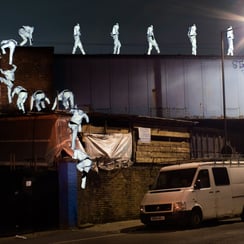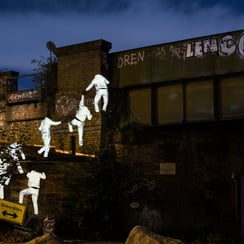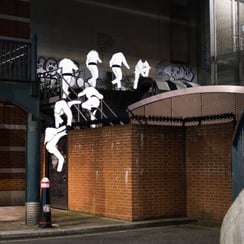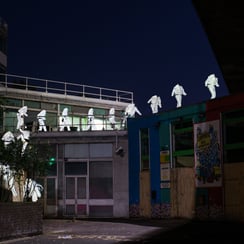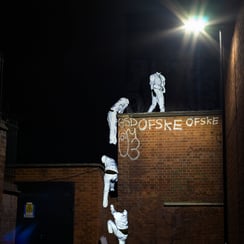"hi-vis” imagines how graffiti artists might have reached the particularly difficult places they've painted in London, England. Each instance of graffiti is a demonstration that that place can be accessed—reading into the spatial dimensions of graffiti, urban space becomes much more open than we are told it is.
A performer climbed these spots wearing a hi-vis tracksuit while I held a spotlight on him. The images are composed of long exposure background shots edited together with these photos of the climb.
hi-vis
2021
(featured in Monumental Graffiti, Rafael Schacter, 2025)


